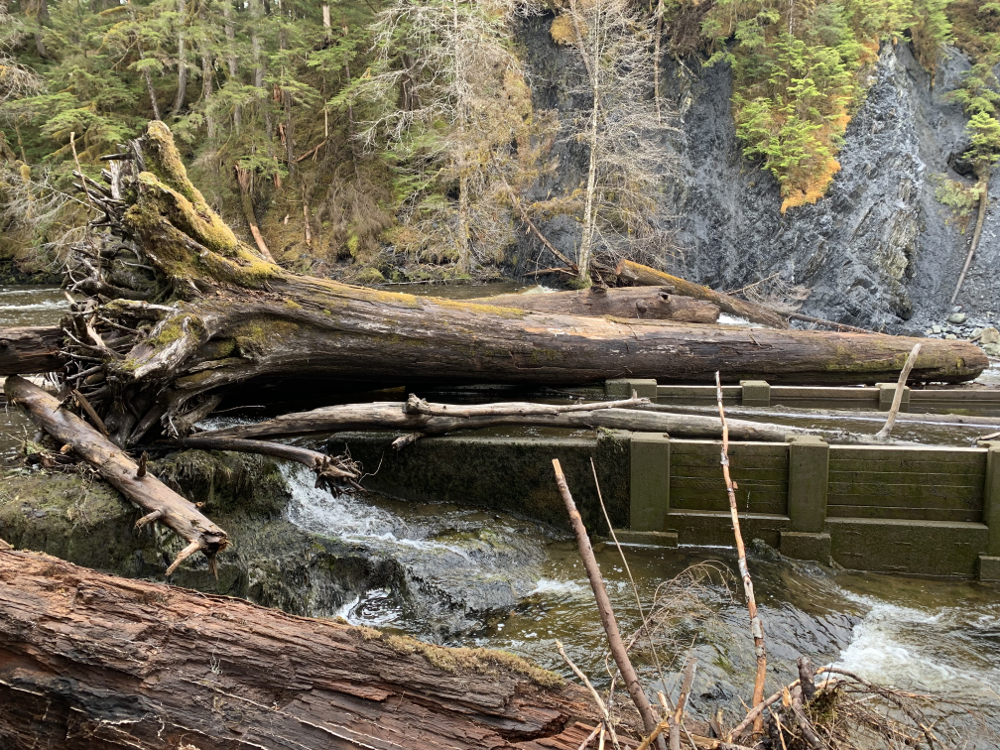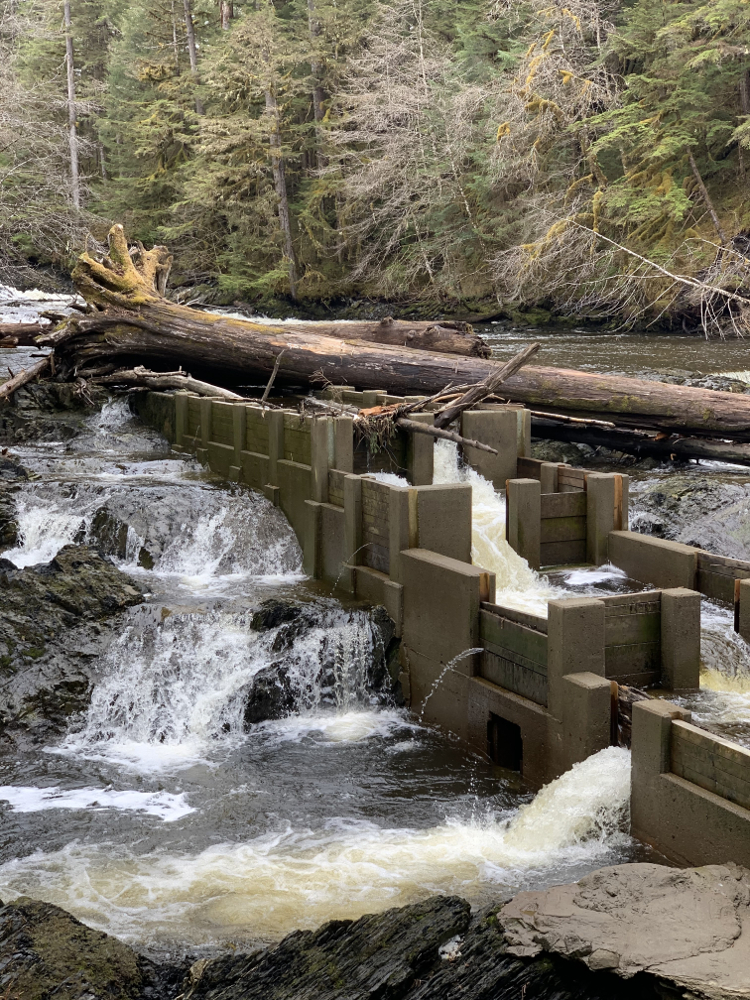
Last year’s heavy rain and snowfall continue to affect Southeast Alaska. Earlier in the summer, snowmelt led to elevated water levels at the Stikine River, Taku River and other rivers and streams in the region.
Higher water levels also mean logs and other debris are getting into creeks. On Kupreanof Island earlier this month, the Forest Service removed several large logs from on top of a fish pass at Mitchell Creek.
Katie Anastas spoke to U.S. Forest Service hydrologist Emil Tucker about how logs floating into creeks — and removing those logs — affect fish and the rest of the ecosystem.
Tucker said the largest log on top of the fish pass looked like it had been there for a while. It hadn’t fallen into the pass yet, but if it had, it could have caused serious damage.

“Even though Mitchell pass is made of concrete, there are wooden components — little boards and baffles in there — that could be damaged,” he said.
Log removal like this doesn’t happen often. This winter’s heavy rainfall has caused elevated water levels to move logs in creeks throughout the region. At Prince of Wales Island, Tucker said, a heap of logs built up against the side of the bridge and shifted its position, making it inaccessible for large vehicles.
Even though they can potentially damage structures like fish passes and bridges, logs are vital to stream and creek ecosystems. In fact, Tucker said, the Forest Service sometimes puts logs back into streams on purpose. Even if decades have passed since the surrounding forest was logged, young trees still aren’t big enough.
“Those small trees don’t play the same ecological role as the large logs will,” Tucker said. “Over time, the stream will be losing wood. Eighty years after harvest is sort of the predicted large wood minimum, and we’re getting into the 45 to 60-year range on a lot of these streams that were harvested back then.”
Depending on the time of year and type of fish — like juveniles in the summer versus pink salmon in early fall — removing or adding logs can change the ecology of a stream.









